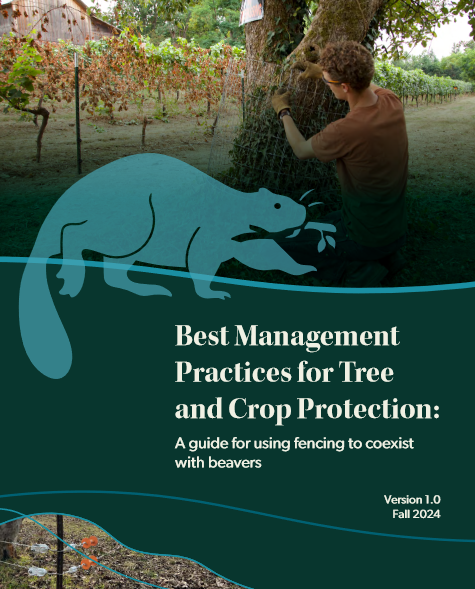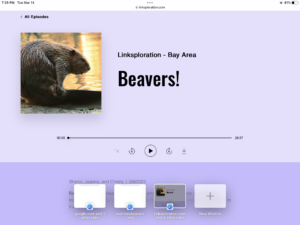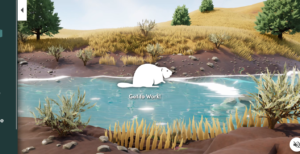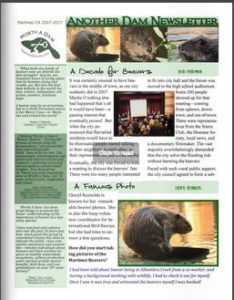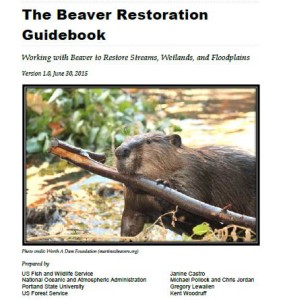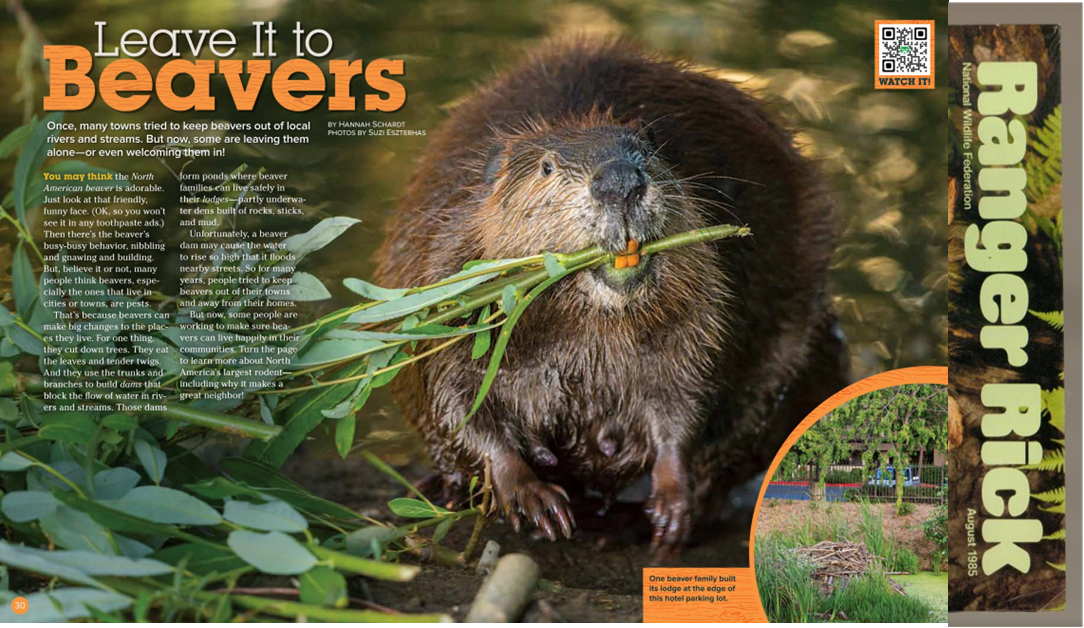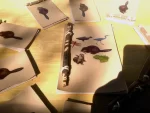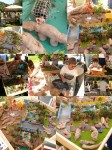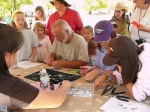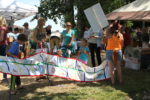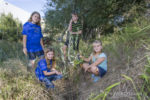I wholeheartedly approve of this new policy enforcing only good beaver news on Sundays. And the universe seems to be catching on and publishing excellent article the night before. Check out this offereing from Larry Hyslop at the Elko Daily News and tell me this man didn’t get serious beaver education from Carol Evans over the years. Connie Lee from the Nevada Department of Wildlife just posted that she attended her first beaver conference and learned a lot. I’m sure Connie and Carol are friends too, and if they aren’t already, they will be soon.
Beaver engineers change streams
We know beavers engineer their environment by creating a dam and upstream pond. Researchers at Rocky Mountain National Park, along with the U.S. Geological Survey, found beavers can strongly affect the hydrologic processes of the Colorado River. They also found beavers produce greater changes to their environment downstream of their dams. Other research also suggests some major problems we see in modern day streams came about from beavers being removed from area streams.
 Water flows over beaver dams along the full length of the dams, spreading water across entire valleys. Without these dams, water simply flows down narrow streambeds. This water stays spread out down the valley for hundreds of yards. Beaver dams also force water into the soil, where it moves laterally, toward the sides of the valley. The underground water table rises and widens the riparian area along the stream. More vegetation such as willows grow downstream from dams.
Water flows over beaver dams along the full length of the dams, spreading water across entire valleys. Without these dams, water simply flows down narrow streambeds. This water stays spread out down the valley for hundreds of yards. Beaver dams also force water into the soil, where it moves laterally, toward the sides of the valley. The underground water table rises and widens the riparian area along the stream. More vegetation such as willows grow downstream from dams.
During peak flows, or floods, dams dissipate the flow energy. Water slows as it works its way through the intricate set of branches making up dams. Water also slows as it works its way back to the stream bed, generally flowing through riparian vegetation.
During the dry summers, dams keep water flowing. By holding back water behind the dam and placing more water underground, beaver dams slowly release water, keeping intermittent streams flowing longer and farther downstream. Beavers create wider riparian areas, with more riparian vegetation, and often create more areas for livestock to drink. During dry years, they may provide the only water for livestock.
The presence of beavers may have reduced or prevented headcuts in the past. Their absence may be responsible for today’s incised streams. Beavers are now returning to many streams and land managers are finding their dams and ponds can help heal headcuts. Sediments build up in beaver ponds, raising the streambed. Over time, dams are abandoned and other dams built, raising other areas along streams. Researchers are helping beavers return to streams in the hopes their presence will help streams heal.
Yes they are, Larry. And the very best help researchers can give them is to encourage folks to stop trapping that pesky rodent off their lands before they can get started fixing the system. Articles like yours help slow down that basic impulse that everyone seem to have. Thank you for this excellent review of beaver repairs in streams. It doesn’t even mention the benefits to fish, wildlife and nitrogen removal, but it has a compelling reason to tolerate beavers. I guess because water is what matters most in Nevada.
Another delightful bit of news that caught my eye this week was concerning a protest of HBC in Canada where Ivanka Trumps line of clothing is being offered after being tossed out of Nordstrom’s. Snicker.
Why ‘Peeved Beavers’ are upset by Ivanka Trump’s brand at the Bay

Armed with distinctive blonde wigs, pursed lips and red power ties, a group of Ontario women are planning to dress up as U.S. President Donald Trump to protest the Hudson’s Bay Co. for carrying Ivanka Trump’s fashion line during two demonstrations in the Toronto area planned for Saturday.
The women call themselves the “Peeved Beavers,” and they have a bone to pick with HBC. St. Jean estimates that, since their secret Facebook group was created three or four weeks ago, it has grown to include approximately 30 members. Amanda Spencer, another Peeved Beaver, says they’re only expecting 10 to 15 members at the two planned protests on Saturday, so they can control the protest, and stay in character.
What an excellent name! The Peeved Beavers! Can I join? I usually have very little patience for the use of the beaver trademark name to describe the ladies, but I could get behind this. I just like the way it sounds!
 Donations to our silent auction arrived all the way from Sydney Australia yesterday. Co-founder Kate McNab was enthusiastic in her generous support. The spirited shop Animalyser will offer beaver supporters a 10% discount on purchased items so go peruse the wonderful selection they have to chose from. Their unusual design placement is my favorite part of these striking products. Go look for yourself. Here’s their story:
Donations to our silent auction arrived all the way from Sydney Australia yesterday. Co-founder Kate McNab was enthusiastic in her generous support. The spirited shop Animalyser will offer beaver supporters a 10% discount on purchased items so go peruse the wonderful selection they have to chose from. Their unusual design placement is my favorite part of these striking products. Go look for yourself. Here’s their story:
 We were encouraged by the enthusiasm and fun people had identifying themselves through two animals. We are both truly inspired by all animals and believe that humans are just another kind of animal.
We were encouraged by the enthusiasm and fun people had identifying themselves through two animals. We are both truly inspired by all animals and believe that humans are just another kind of animal.
 The question ‘which two animals best describe you?’ started as a bit of fun by Kate McNab, Co-Founder, in 2012 at a dinner party. Some of our friends were able to answer the question immediately and others needed some time. That evening was the night when our blended names Mele (Elephant/Monkey) and Fanther (Falcon/ Panther) were created
The question ‘which two animals best describe you?’ started as a bit of fun by Kate McNab, Co-Founder, in 2012 at a dinner party. Some of our friends were able to answer the question immediately and others needed some time. That evening was the night when our blended names Mele (Elephant/Monkey) and Fanther (Falcon/ Panther) were created
What delightful dinner parties you throw! Can we come? Obviously in my case the answer would be a “Beaba“. Because I really liked the beavers and I Badgered city council until they let me keep them.
Thanks Kate!
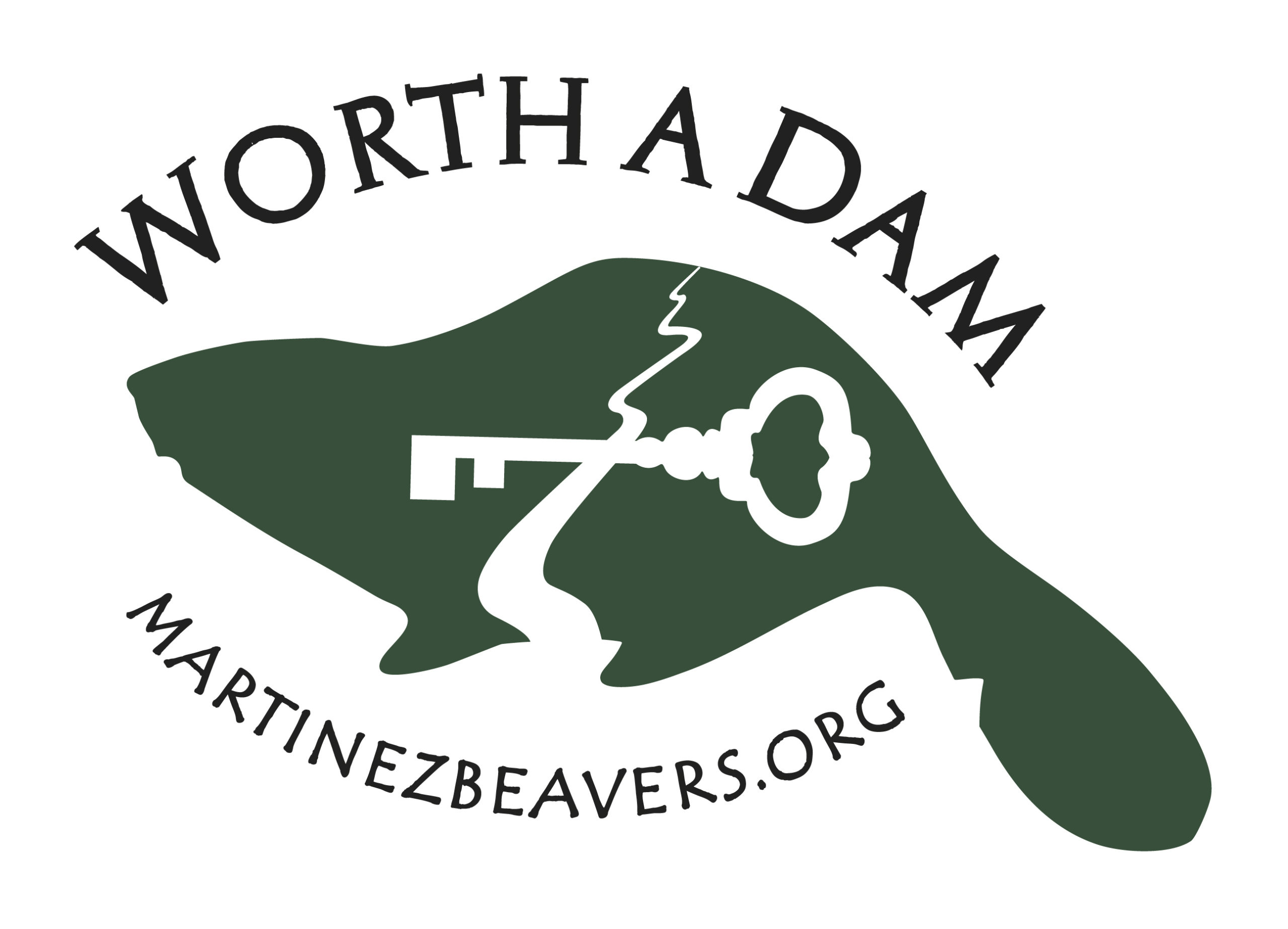


 Do you know who Carol Evans is? You really should. I read about her work in Elko, NV many years ago and knew I had to reach out. You for sure saw her in the beginning of the PBS documentary checking out the beaver restoration of Suzie Creek in Nevada with Suzanne Fouty. Now do you remember? Carol has been working her special collaborative magic with the unbelievably complex cast of characters in her state with some pretty amazing results.
Do you know who Carol Evans is? You really should. I read about her work in Elko, NV many years ago and knew I had to reach out. You for sure saw her in the beginning of the PBS documentary checking out the beaver restoration of Suzie Creek in Nevada with Suzanne Fouty. Now do you remember? Carol has been working her special collaborative magic with the unbelievably complex cast of characters in her state with some pretty amazing results.

 And just in case you are inclined to watch hers and not his, I will warn you that you would be making a very grave error. Because
And just in case you are inclined to watch hers and not his, I will warn you that you would be making a very grave error. Because 






